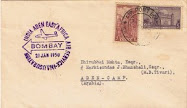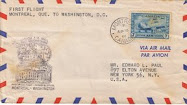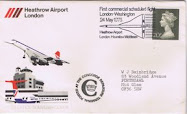Experiments in powered flight were continuing in Europe. In 1906 Traian Vuia, a Romanian inventor and aviation pioneer designed, built and tested a tractor configuration monoplane . Vuia's high-wing monoplane was powered by a carbonic acid gas engine. The 25 hp engine was adapted by Vuia as the engine he wanted was not available. His first airborne test was at Issy-les-Moilineaux, a Paris suburb. After accelerating about 50m his tiny monoplane left the ground and flew about 12 metres on 18th March, 1906, then the engine cut off and it came down. It was caught by the wind and damaged hitting a tree. Vuia made several short flights later in 1906 and 1907 but was unsuccessful in sustained flight. However, Vuia's invention influenced Louis Bleriot in designing monoplanes. The airfield at Issy later became the headquarters of the Bleriot Aviation School.
Another Romanian who became famous as an aviation pioner was Aurel Vlaicu. He built a glider in 1909 in which he carried out several flights. This success encouraged him to attempt building a plane in 1910. He named his craft A. Vlaicu Nr. I which flew for the first time on June 17, 1910 on Cotroceni field near Bucharest. He flew for apporximately 40 meters at a height of 3-4 meters . During the summer of 1910, Vlaicu flew several times at heights exceeding hundreds of meters and lengths of several kilometres. Construction of A. Vlaicu Nr. II was begun in December 1910 and completed in April 1911. He entered the A. Vlaicu Nr. II in the June 1912 international flight competition held in Aspern - Vienna. He was awarded the first prize for target launching, and four second prizes, one of which was for steady point landing. His achievements during the competition were so impressive that the press considered Aurel Vlaicu the second pilot of the contest after the famous French aviator Roland Gaross. Aurel Vlaicu died on September 13, 1913 while attempting to be the first to fly the Carpathian Mountains.











No comments:
Post a Comment